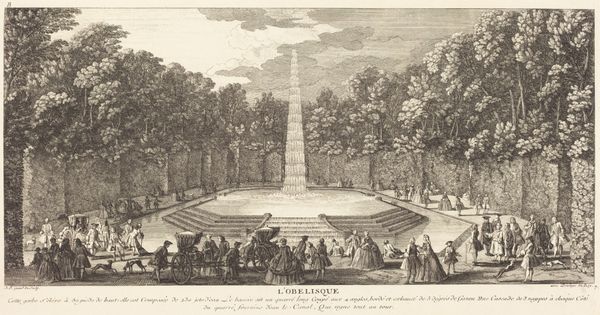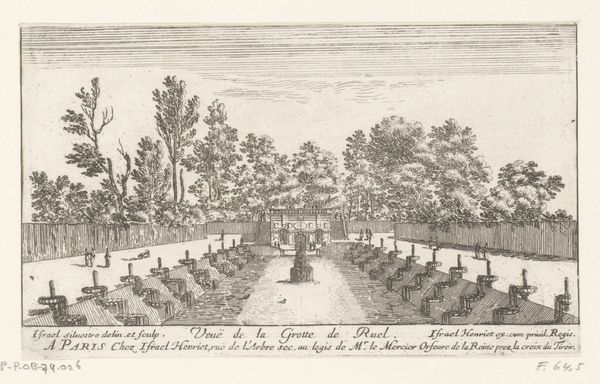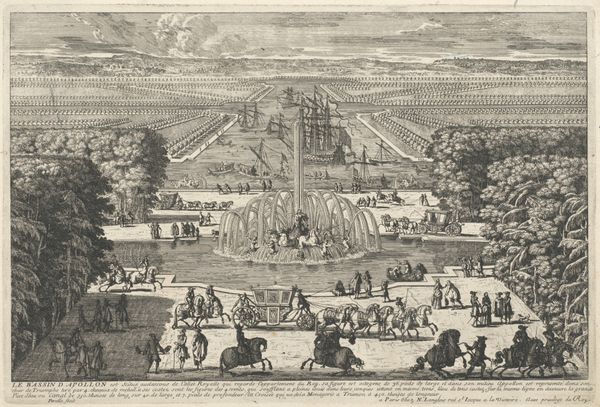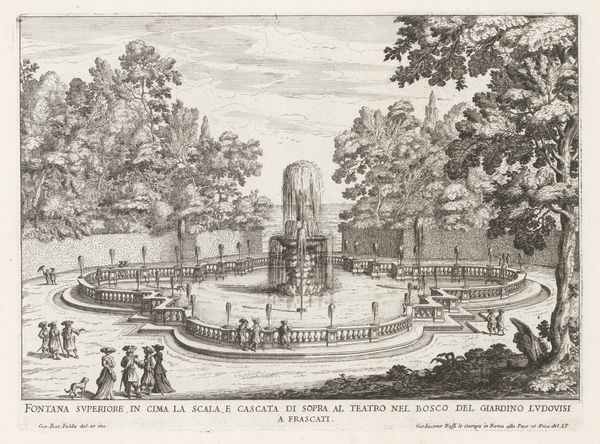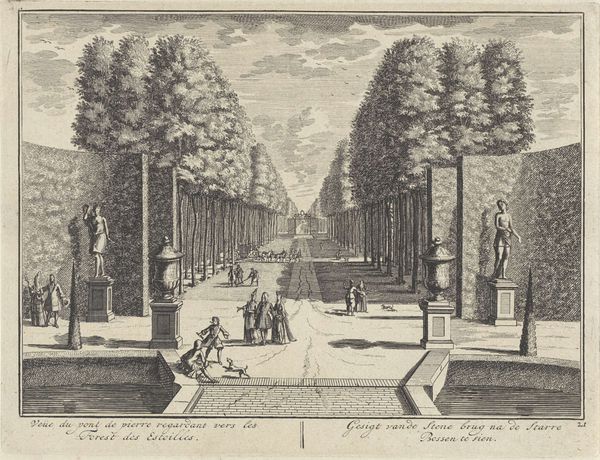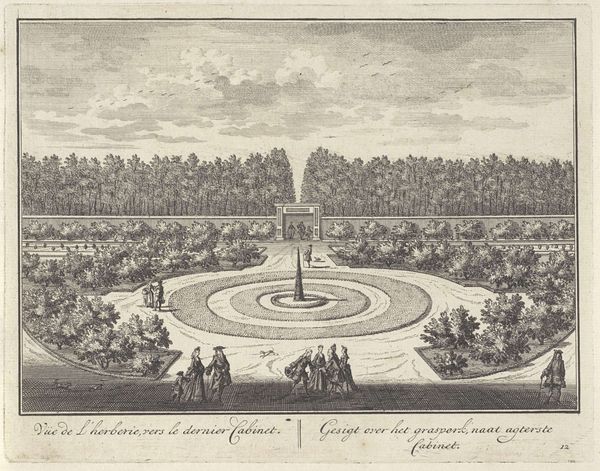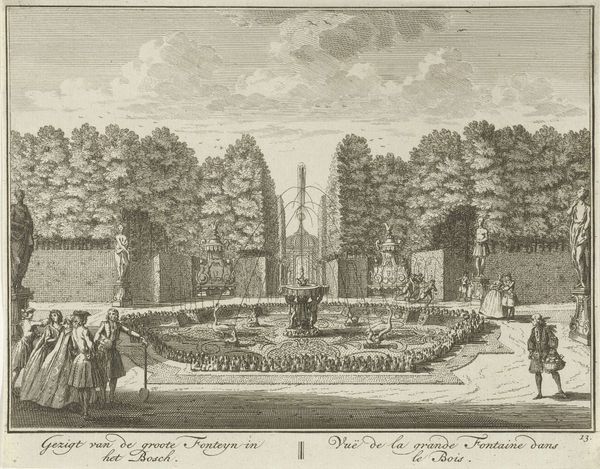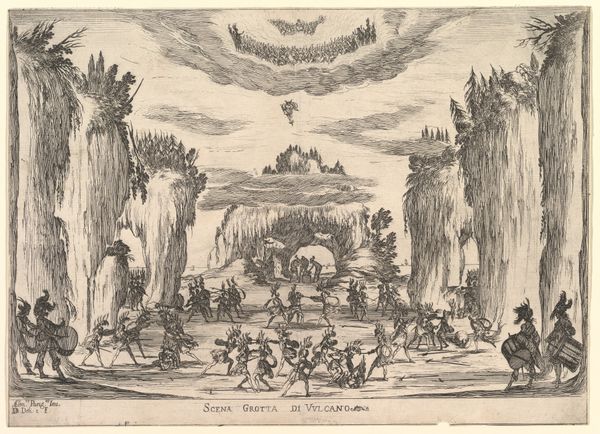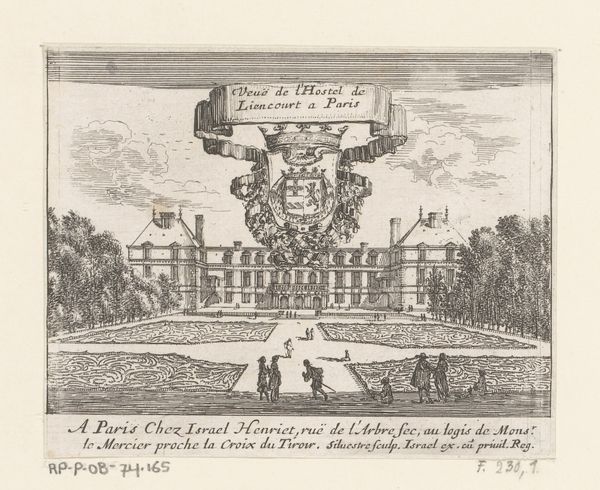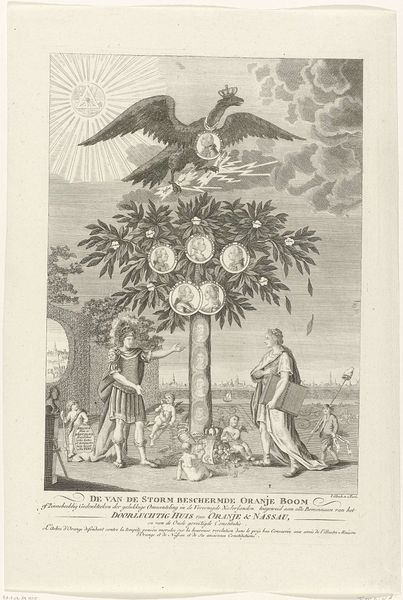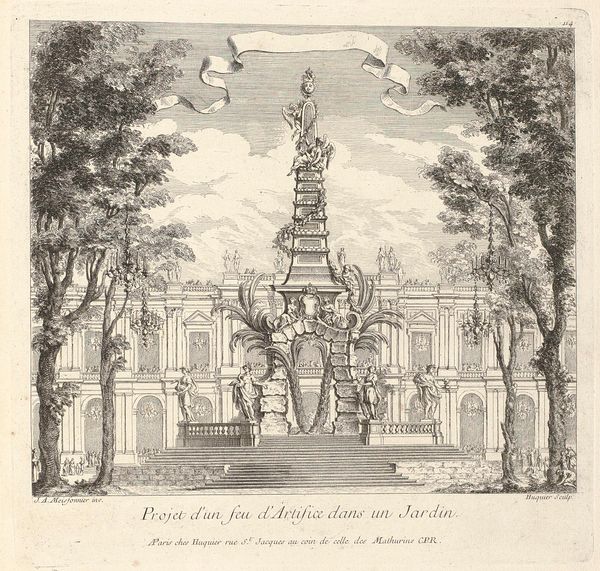
Dimensions: height 320 mm, width 425 mm
Copyright: Rijks Museum: Open Domain
Editor: So this engraving, "De Oranjetuin" from 1787-1788 by Joseph Gleich depicts a pretty elaborate garden. It has a sort of dreamlike, almost staged quality. What do you see in this piece beyond just the aesthetic appeal? Curator: It's tempting to view this simply as a decorative cityscape, but let’s consider its deeper layers. The "Oranjetuin" or Orange Garden alludes to the House of Orange-Nassau, a historically significant lineage that shaped the Netherlands. How does the garden, as a constructed space, reflect power dynamics? Editor: Well, everything seems very ordered, controlled. There are these figures that seem almost like statues, so it looks quite formal and staged rather than natural. Curator: Exactly. The very act of designing and engraving this scene speaks to control and idealization. Consider the period: 1787. What was the social climate like then? This was a time of emerging Enlightenment ideals juxtaposed with the realities of aristocracy and nascent nation-states. Editor: Right, so this idealized garden, perhaps commissioned, presents a specific image that the House of Orange-Nassau wanted to project. Stability, wealth, and order. Almost like propaganda? Curator: Precisely! And think about who this print was made for, and who had access to it. These images circulated among a specific social class, reinforcing particular narratives of power and privilege. How does knowing this affect your interpretation of the work? Editor: It shifts my focus from just the beauty of the engraving to questioning its purpose and the messages it was sending to its audience. Curator: Which encourages us to question how such images participated in, and potentially reinforced, existing social structures. It becomes a lens through which we view both art and history. Editor: It really contextualizes what might seem like a pretty picture with complex ideas about power and identity! Curator: Exactly. This piece really prompts us to think critically about art as a historical document and a shaper of social perceptions.
Comments
No comments
Be the first to comment and join the conversation on the ultimate creative platform.
